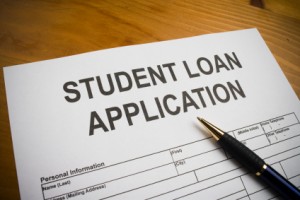Income Based Repayment (IBR) and the Federal Student Forgiveness Law
On Wednesday, under the College Cost Reduction and Access Act of 2007, the repayment of college loans will become a whole lot more manageable for lower income wage earners.
New Options
The new Federal Student Loan Forgiveness Law is set to help student repayment in two significant ways:
• Lowering the monthly student loan payment on federal student loans (Income Based Repayment or IBR); and
• Canceling remaining loan debt after 10 years for those who have entered public service (Loan Forgiveness for Public Service).
Income Based Repayment (IBR)
Income based repayment (IBR) offers enormous potential reductions in the monthly payments for high debt/low income borrowers. Designed for those with “partial financial hardship,” IBR limits annual educational debt payments to 15% of a borrower’s discretionary income. For the purposes of the law, discretionary income is defined as adjusted gross income minus 150% of the poverty level for the borrower’s family size.
 Under the IBR plan, the loans eligible for consideration include: all Federal Direct Loans (FDL) and federally guaranteed loans (FFEL) including subsidized and unsubsidized Federal Stafford loans; Federal Grad PLUS loans (but not Parent PLUS loans); and Federal Direct Consolidation loans. Federal Perkins Loans are only eligible when part of a Federal Direct Consolidation Loan.
Under the IBR plan, the loans eligible for consideration include: all Federal Direct Loans (FDL) and federally guaranteed loans (FFEL) including subsidized and unsubsidized Federal Stafford loans; Federal Grad PLUS loans (but not Parent PLUS loans); and Federal Direct Consolidation loans. Federal Perkins Loans are only eligible when part of a Federal Direct Consolidation Loan.
The Detroit Free Press offers the following as an example of the potential savings:
Take a college grad who has $40,000 in federal student loans and an adjusted gross income of $30,000 each year.
If we use this example, the grad would pay $171.94 a month using the new plan — compared with $460.32 with a standard 10-year repayment plan or $277.63 a month for an extended 25-year repayment plan.
As a person receives annual salary increases, the monthly payment would rise only according to the percentage of salary increase. In the case of a married couple, each would be eligible for the program and the eligibility would be dependent on each individual’s situation, not the combined income of the two individuals.
The new IBR option goes into effect July 1, 2009. Members of the Class of 2009 become eligible within two months of graduation.
Loan Forgiveness for Public Service Employees
In addition to repayment reduction under the law, students entering public service are also eligible for loan forgiveness. Upon entering full-time public service, once a borrower makes 120 qualifying loan payments on a Federal Direct loan (including Federal Direct Consolidation loans), the unpaid balance remaining including the accumulated interest on the loan is forgiven. The worker must remain in public service for the entire ten year period and the 120 payments timeframe but there is no limit to the amount to be forgiven.
 The time period for public service is retroactive to October 1, 2007 meaning those borrowers who have already elected public service may begin counting the ten year period at that point. Some restrictions occur for those who had already consolidated their loans and those restrictions may move the eligible period forward to July 1, 2008.
The time period for public service is retroactive to October 1, 2007 meaning those borrowers who have already elected public service may begin counting the ten year period at that point. Some restrictions occur for those who had already consolidated their loans and those restrictions may move the eligible period forward to July 1, 2008.
In the case of loan forgiveness, only Federal Direct loans (including Federal Direct Consolidation loans) are eligible. Payments made on federal loans in the Guaranteed (or FFEL) program are not eligible for the loan forgiveness aspect (only eligible for IBR).
A Major Step Forward
The new law represents an enormous positive development for those students who have accumulated significant federal college debt yet have limited income. To learn more about the program and examine the calculation process visit:
• Georgetown Professor Phil Shrag’s law review article detailing IBR and Loan Forgiveness for Public Service Employees (pdf).
• The IBR monthly repayment calculator.
• Federal direct consolidation loan information and applications.



August 17th, 2009 at 2:06 pm
Three years ago the Federal Student Loan collections department started taking money from me. They took my income tax refund and $130.00 a month from my $830.00 a month Social Security Check.A total of about $4,000.00 to date. This is a tremendous amount of money for me. I had no idea what was happening. Ultimately I found out that someone had gotten loans in my name and used them in another state from where I was living at the time and I was never able to get ID from the school because it is now defunct.
I sent the department who was taking my money the signatures from the time frame of these loans about 20 years ago and they still will not give me credit and return the money that they have taken from me.
I never had a student loan application for anything.
I filed the proper documents with the Federal Student Loan people and they keep sending me a statement that says that they want the signatures from the 1990’s which I sent to them more that a year ago,,twice,,. Everytime I send them something they say that their time to clear this up has begun again.
I live on under $12,000.00 a year and these people are stealing my money. I understand that President Obama has signed a new bill of forgiveness of loans for people on limited incomes under $16,000.00 a year but I have not been able to find this law. I wrote to my congressman to help me but he has not answered me.
Can anyone give me any advice for getting this cleared up, getting the money that they stole from me back and not needing to worry about this in the future?
I would be so very greatful for any help.
October 22nd, 2009 at 12:41 pm
Yeah, too bad this loan forgiveness policy won’t cover all the years I worked for a nonprofit from 1996 – 2006 after I graduated. Is there any chance at all that this time of service would be considered retroactively? If the damn banks get a bailout, it would be nice if the gov’t would cut me a break too.
November 3rd, 2009 at 5:46 pm
I finally acquired a graduate degree while working on trying to get a specific job with the government. As I got within my last three months of graduating (Feb 2009) the government took away these jobs. I am now trying to figure out where all the student loans are at and how the ICR plan can be put to work by consolidating the loans. No one out here seems to know how to get all loans into one or two repayment plan(s). Before I graduated the Financial Aid department at the school said they would help me as much as possible then I graduated. Now, they cannot provide a list from where all student loans were received.
December 26th, 2009 at 10:39 am
I am 67 years old and collecting social security each month. I still have a job earning a small income. According to my student loan company, I must give them the amount I am collecting from social security besides my earned income. Why must I give them my social security income? I have already paid social security during all my years of working. Isn’t that income geared for the individual’s well being if and when there is no more earned income? Help. Thanks.
Linda